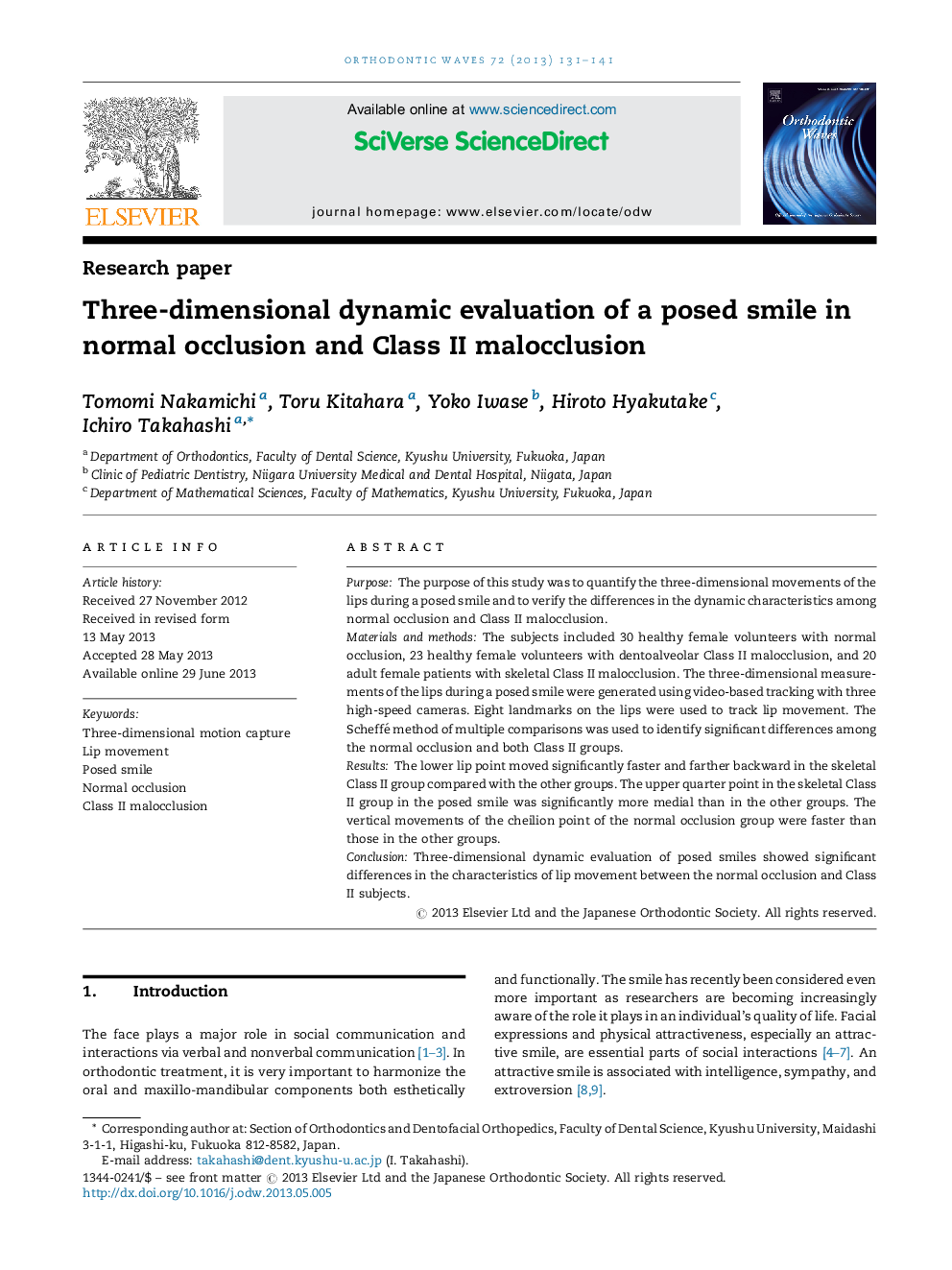| Article ID | Journal | Published Year | Pages | File Type |
|---|---|---|---|---|
| 3170395 | Orthodontic Waves | 2013 | 11 Pages |
PurposeThe purpose of this study was to quantify the three-dimensional movements of the lips during a posed smile and to verify the differences in the dynamic characteristics among normal occlusion and Class II malocclusion.Materials and methodsThe subjects included 30 healthy female volunteers with normal occlusion, 23 healthy female volunteers with dentoalveolar Class II malocclusion, and 20 adult female patients with skeletal Class II malocclusion. The three-dimensional measurements of the lips during a posed smile were generated using video-based tracking with three high-speed cameras. Eight landmarks on the lips were used to track lip movement. The Scheffé method of multiple comparisons was used to identify significant differences among the normal occlusion and both Class II groups.ResultsThe lower lip point moved significantly faster and farther backward in the skeletal Class II group compared with the other groups. The upper quarter point in the skeletal Class II group in the posed smile was significantly more medial than in the other groups. The vertical movements of the cheilion point of the normal occlusion group were faster than those in the other groups.ConclusionThree-dimensional dynamic evaluation of posed smiles showed significant differences in the characteristics of lip movement between the normal occlusion and Class II subjects.
